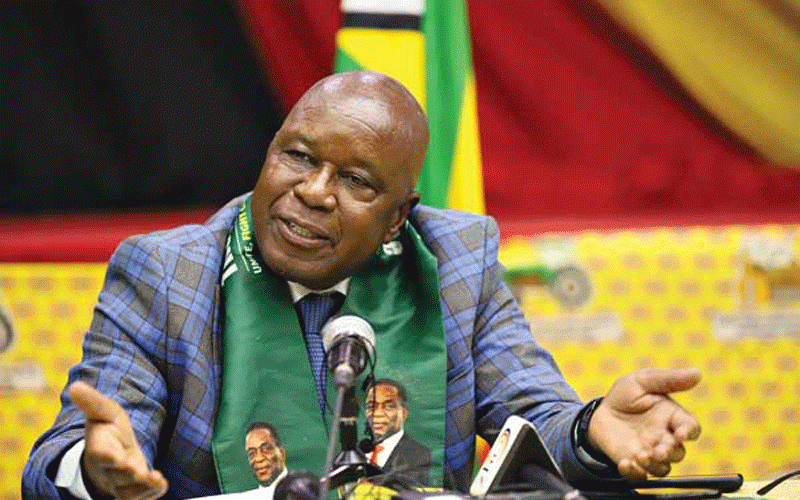
guest column: Peter Makwanya
As climate change impacts persist, and unabated of course, it is increasingly clear that the most affected people are the rural based, due to weak resilient capacities, lack of education, training and awareness, neglect as well as their periphery nature.
As a result of a complex nature of wide networks of bottlenecks and communicative power relations, the voice of the grassroots can hardly be heard at all.
Most rural areas are still situated where they have always been, even during the days of colonialism, that is in the arid and semi-arid regions (region 4 and 5), with lack of drinking water, poor infrastructure, erratic rainfall patterns, flood prone and poor harvests, as well as economic insecurity. The above negatives, always leave the grassroots vulnerable to the challenges of climate change.
In such areas, communities need to engage in simple adaptation measures just to enhance their livelihoods and reduce climate risks. But the major obstacle appears to be a disconnection between grassroots and policymakers as well as the scientists who drive the climate change discourse, research and innovations.
The grassroots are critical and sustainable pillars of local knowledge, comprising indigenous knowledge systems (IKS), cultural communication strategies and world views. These can be integrated into the national climate policy framework of any country, but, unfortunately, the grassroots are not consulted and their concerns are not factored in.
This culminates into a sad episode of institutionalised, systematic exclusion and disorientation.
In their own right, the grassroots boast of a wealth of knowledge with regard to a wide range of coping mechanisms, which could be streamlined and communicated into the national climate policy framework, in order to make their voices heard as well.
- Chamisa under fire over US$120K donation
- Mavhunga puts DeMbare into Chibuku quarterfinals
- Pension funds bet on Cabora Bassa oilfields
- Councils defy govt fire tender directive
Keep Reading
The scientific community of practice, which articulate major climate change impacts also appears to be ignoring the existence of the grassroots, while the policymakers are not keen to engage the grassroots in all their climate endeavours.
As such, the grassroots are left without social and environmental safety nets, they are vulnerable, without cushion and exposed. In this regard, for successful national climate policy formulation and adaptation programmes to contribute to resilience, the grassroots should not be left behind.
This is against the sustainable development goals mantra that advocates for an inclusive approach in all development agendas.
For this reason, the climate sustainable communication processes should not be one way, but multi-pronged, diverse and versatile. In all sustainable development practices, it is the local voice and the local communities who matter most.
The grassroots are also unique and important in their own right as they also contribute to the country’s national gross domestic product, because such integration and purposeful engagement are key.
Zimbabwe’s agro-based economy, which largely depends on natural resources, is always found on the wrong side of progress by not sufficiently incorporating the voices of the grassroots.
This is so because the current national climate communication framework seem not to reach out to the most vulnerable communities by providing mechanisms to clear obstacles, because of lack of technological advancement, connectivity, locally relevant language, conducive politics and appropriate use of power relations.
The climate management practices on the ground, point to inherent stakeholder disintegration which is, in turn, affect livelihoods enhancement.
For these reasons and many other related ones, communication gaps that would link grassroots, scientists and policymakers need to be sufficiently harnessed and integrated.
In this regard, the role of community radios can also be factored in and be utilised as they provide context specific communication to the grassroots, in languages that are understood by all the members of the concerned communities.
In this view, endless lectures to the grassroots and the vulnerable communities do not normally produce positive results.
Assuming that the scientists and the policy planners have the ability to listen, then grassroots voices and concerns may be channelled into scientists and policymakers’ communities of practice.
It is also important to note that the grassroots’ world views will be integrated into the scientific networks so that the rural communities would be in a position to have sound knowledge and understanding of climate change issues, especially those with a heavy bearing on grassroots emancipation.
The problem is when everything is articulated from the scientists and policymakers’ points of view without being inclusive of the grassroots concerns.
Above all, issues of technological concerns are not negotiable because the grassroots need to be part and parcel of technological growth and innovations. The grassroots, by being connected to online networks may also come up with their locally and community-based interactive online platforms in order to reach out to each other as well as network with other grassroots-based communities.
This is important in the sense that, even if the grassroots rely on basic communication frameworks, they should not be left out from the technological discourses as well.
By so doing, the harnessing of the grassroots voices and world views would be used to improve the local communities’ livelihoods and resilience. This becomes a strong network of interacting traditional, cultural, religious and local knowledge of knowing into hybridity for the sustainable livelihoods that we all yearn for.











